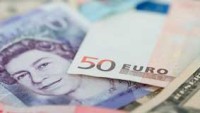 European markets look set to open slightly higher this week, with currencies likely to remain in focus once again after German finance minister Wolfgang Schaeuble took aim at the European Central Bank over the weekend for its loose monetary policy, saying that the currency is too low for Germany, and as such is responsible for the country’s trade surplus. The timing of the comments is no coincidence given last week’s broadside by Peter Navarro, Donald Trump’s chief trade advisor, and are clearly an attempt to try and deflect some of that criticism.
European markets look set to open slightly higher this week, with currencies likely to remain in focus once again after German finance minister Wolfgang Schaeuble took aim at the European Central Bank over the weekend for its loose monetary policy, saying that the currency is too low for Germany, and as such is responsible for the country’s trade surplus. The timing of the comments is no coincidence given last week’s broadside by Peter Navarro, Donald Trump’s chief trade advisor, and are clearly an attempt to try and deflect some of that criticism.
At the beginning of this year the US dollar index hit its highest levels in 14 years, and since then it has slowly started to slip back, despite the fact that US economic data has by and large been positive, while Fed policymakers have suggested that we could well see multiple rate rises this year.
In addition to that there is increasing evidence that inflationary pressure is starting to exert itself in supply chains around the world, as input prices rise to multi year highs, yet the rise in the US dollar that we’ve seen over the course of the past twelve months has come to sharp halt, as it posted its worst monthly fall since March last year.
While one of the reasons for the US dollars slide is declining optimism that new US President Trump will be able to deliver on his fiscal stimulus promises, there is also the small matter of concern that the new US administration might actively look to try and weaken the US dollar after recent comments about how too strong a dollar could hurt the US economy. Recent comments criticising China, Japan and Germany for weakening their currencies has prompted concerns of an outbreak of currency wars.
Judging by last week’s US January jobs reports, the strength of the dollar doesn’t appear to be a problem yet, after a 246k ADP print, and a 227k non-farm payrolls number, the best numbers since the summer, which prompted US stock markets to head back towards their recent peaks, as the Dow closed back above 20k for the first time in a week, though part of Friday’s rally was also driven by a sharp rise in banking shares after another executive order aimed at loosening financial regulation.
The US dollar on the other hand closed lower for the fourth week in succession, as markets interpreted the numbers in a manner that suggested the belief that the Federal Reserve would be cautious about tightening policy in March.
The Fed has consistently stated that it wants to see evidence of a tightening labour market, and Friday’s numbers rather suggest the opposite, with a rise in both the unemployment rate to 4.8%, and the participation rate from 62.7% to 62.9%. These rises suggest that there may well be more so called slack in the labour market than previously thought.
Furthermore average hourly earnings dropped sharply from 2.8% to 2.5%, which suggests that while inflation may be rising there is no upward pressure on wages.
While the US dollar had another disappointing week, the pound also underperformed, slipping back from its recent highs after an unexpectedly dovish Bank of England quarterly inflation report.
MP’s also waved through the first and second votes approving Article 50, though this may well have been the easy bit as starting today the bill to trigger Article 50 gets its final reading as it goes through the committee stage in parliament. This will give those MP’s who are so inclined the opportunity to try and add amendments before it gets kicked up upstairs to the House of Lords on Wednesday.
Any attempt to frustrate or delay this process could well add to the uncertainty surrounding the process, which Prime Minister May is hoping to have ready to go by the beginning of March.
EURUSD – the euro continues to find the air a little thin above the 1.0800 area touching 1.0830 last week. Interim support now comes in at the 1.0720 level. While above the 50 day MA at 1.0580 the risk is for a potential move through 1.0850 towards the 1.1000 area.
GBPUSD – having slipped back from the 1.2710 last week the recent upward momentum has diminished. The next key support sits down near the 1.2410 area, and 50 day MA, and this needs to hold to argue a move towards 1.2800. A move below 1.2400 would argue for a return to the 1.2250 area.
EURGBP – a break through the 0.8650 area argues for a move towards 0.8700. While below here the risk remains towards the downside. The 0.8570/80 area, remains the range pivot and becomes support again. A move through the 0.8470 area argues for a move back towards 0.8300.
USDJPY – the US dollar’s key support remains down at the 112.10 area. The key resistance remains up near the 114.30 level. To stabilise we need to get back above the 114.30 area or run the risk of a deeper move towards 111.00.













